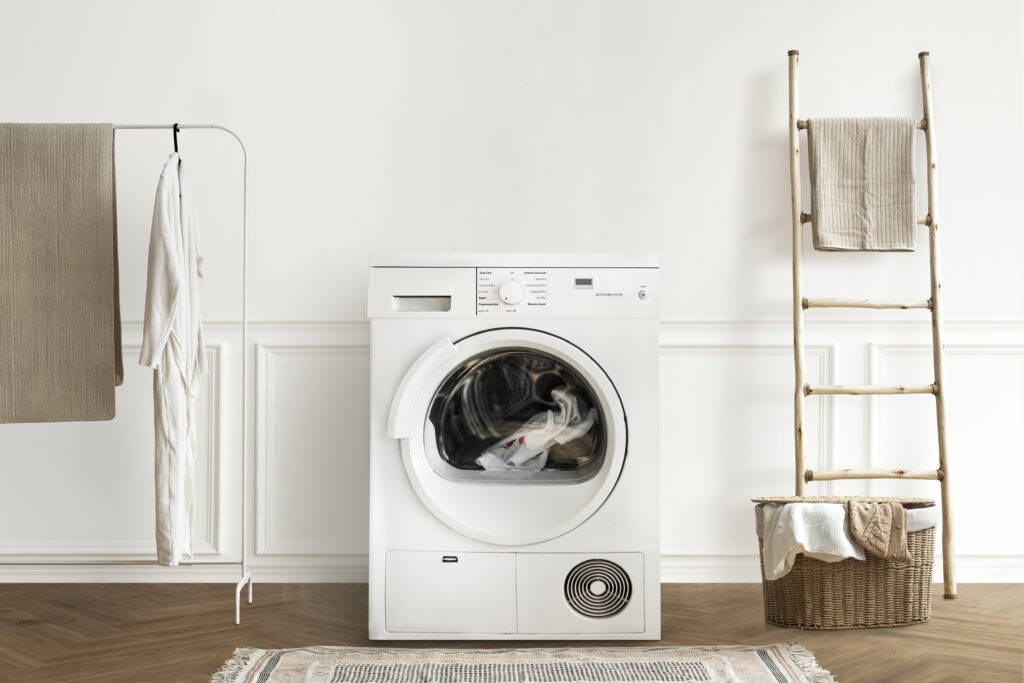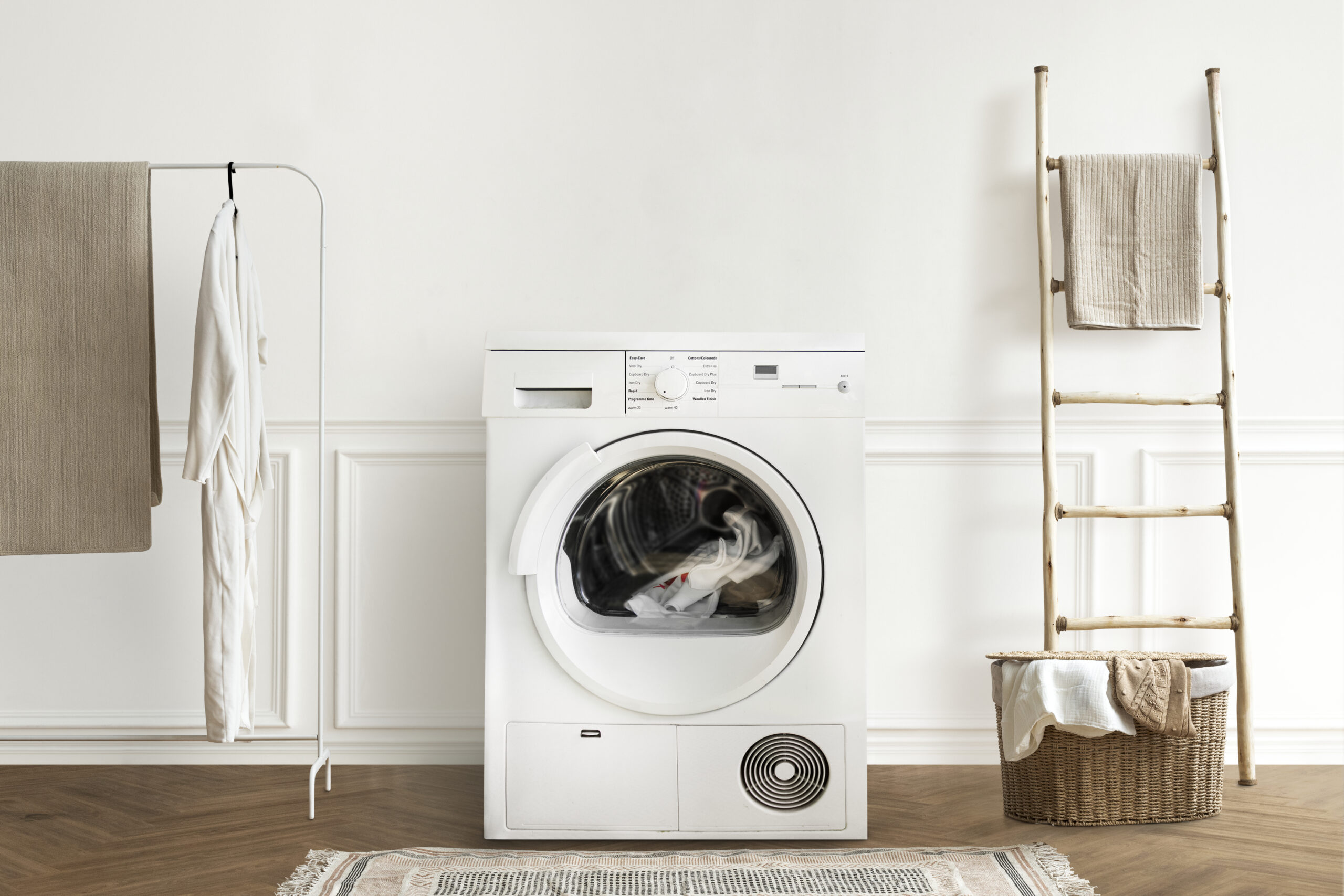One of the most annoying laundry issues you may encounter is when your washing machine stops draining correctly. In addition to leaving your clothes drenched, it may indicate a problem with your appliance that, if left unchecked, could require more expensive repairs.
We’ll outline the main causes of your washing machine’s failure to drain, how to quickly troubleshoot it at home, and when to call a professional technician in this 2025 guide for homeowners in the USA.

Why Doesn’t My Washing Machine Empty?
When your washer won’t drain properly, there are a number of potential reasons. Simple issues like a clogged hose or more complex issues like a malfunctioning pump could be the cause. Let’s examine the most typical causes.
One clogged drain hose
Your washer’s drain hose removes soiled water. Lint, cloth, grime, or tiny objects like buttons and coins can clog it over time and prevent the water from draining.
Indications:
After a cycle, water remains inside the drum.
Unusual sounds or gurgling as the machine attempts to drain
Correct:
Unplug the washing machine.
Check for obstructions by removing the drain hose.
Use a long, flexible brush to clean it, or use water to flush it.
2.Unclean or obstructed pump filter
Lint and other small particles are captured by a pump filter in modern washing machines before they reach the drain pump. Your washer won’t drain effectively if it’s clogged.
Indications:
Mid-cycle, the washer stops
Digital panels with error codes like “OE,” “5E,” or “ND” (which vary by brand)
Water trapped inside or slowly draining
Correct:
Find the pump filter, which is often located behind a front lower panel.
To catch water, place a towel and tray underneath.
Remove any debris, clean, and replace the filter cap after unscrewing it.
3️⃣ Bad Drain Pump
Your drain pump won’t be able to remove water if it is worn out or damaged. Age, blockages, or electrical issues can all cause pumps to fail.
Indications:
No draining, but a humming sound
loud, strange grinding noises
On the drain cycle, the washer stalls.
Correct:
First, look for obstructions.
Use a multimeter to test the pump if it is clear.
If the pump is broken, replace it (do it yourself if you know how, or hire a professional).
4️⃣ Twisted or Kinked Drain Hose
Sometimes the issue is as straightforward as a kinked or bent drain hose that is stopping water from escaping.
Indications:
The washer functions properly except for no draining.
Hose that is obviously bent or flattened
Correct:
Check the drain hose after unplugging it.
If damaged, replace it or straighten out any kinks.
5.Obstructed Home Drain
Water won’t drain out of your washer properly if there is a blockage in the home plumbing where the drain hose connects.
Indications:
Water seeping back into the standpipe or sink
Slow drainage or overflow in adjacent sinks
Correct:
Look for any obstructions in the standpipe.
Use a drain cleaner or a plumber’s snake.
If in doubt, contact a qualified plumber.
6️⃣ A broken door switch or lid
For both front-load and top-load washers to enter the drain cycle, the lid switch on the top-loading washer or the door lock mechanism on the front-loading washer must be engaged.
Indications:
The washer stops spinning or pauses.
When the lid or door is closed, there is no spin or drain action.
Correct:
Check the continuity of the switch.
If defective, replace (most models cost between $20 and $50).

How to Fix a Washing Machine That Isn’t Draining
Before contacting a technician, you can use this short do-it-yourself checklist:
✅ First, turn off the computer and disconnect it.
Always turn off the power source before moving or inspecting your washer for safety.
✅ Step 2: Look for Any Hose Kinks
Straighten any bent hoses by looking behind your washer.
Step 3: Manually Empty the Machine
Use a towel and a shallow tray.
Open the drain hose or pump filter.
Release the water in a safe manner.
Step 4: Empty the Pump Filter
Wipe clean, remove debris, unscrew the filter, and open the front access panel.
✅ Step 5: Examine the House Drain and Drain Hose
Check the standpipe and hose for obstructions.
When to Contact an Expert
Professional equipment and expertise are required for certain washer drain issues. Make a technician’s appointment if
Electrical testing on the pump motor is unsuccessful.
You discover electrical problems or leaks.
After cleaning the hoses and filters, the machine still doesn’t drain.
A control board problem is indicated by certain error codes.
Average Repair Prices (USA, 2025):
Replacement pump: $150–$350
Replacement of a hose costs $75 to $150.
Repairing a control board costs $200 to $400.

How to Avoid Drain Issues in the Future
You can avoid future headaches by keeping your washer draining smoothly. Observe these easy maintenance guidelines:
Every month, clean the pump filter.
Every few weeks, check hoses for kinks.
Avoid overtaxing the machine.
Before washing, shake out your pockets.
Every month, run a cleaning cycle using white vinegar.
Drain hoses should be changed every three to five years.

Conclusion 🔍
Although a washing machine that refuses to drain is inconvenient, it is frequently fixable with the right information. Most problems can be fixed with simple tools and a little perseverance, whether it’s a kinked hose, a clogged filter, or a broken pump.
It’s wise to hire a professional before the issue gets worse if do-it-yourself solutions don’t work. Your washer will continue to function properly for many years to come if you perform routine maintenance and clean its internal parts.
Suggested Products & Tools:
To clear pipes, use a drain snake tool.
Cleaning brush for pump filters
A multimeter is used to test electrical components.
Baking soda and white vinegar for all-natural cleaning

Leave a Reply